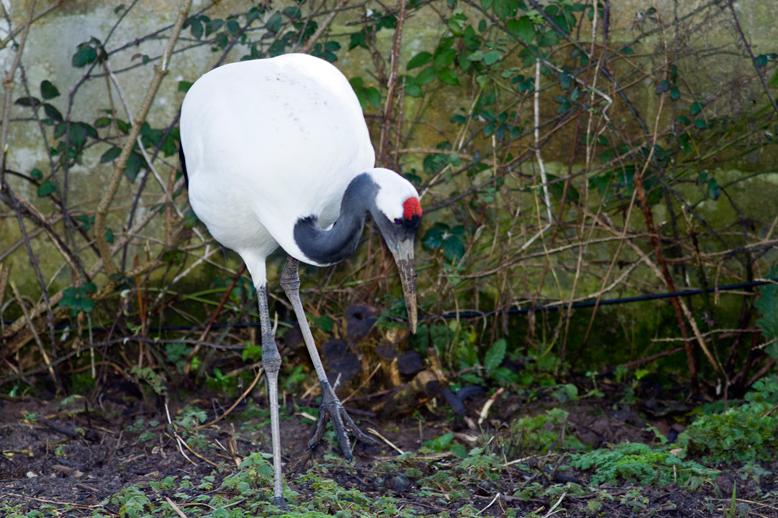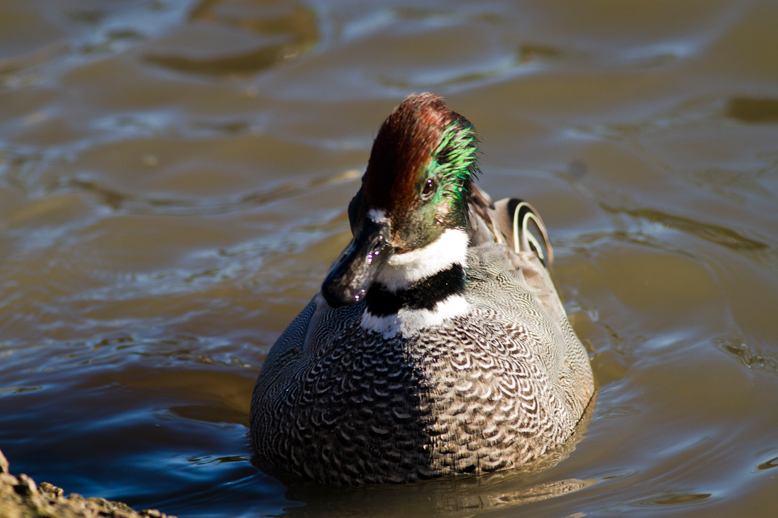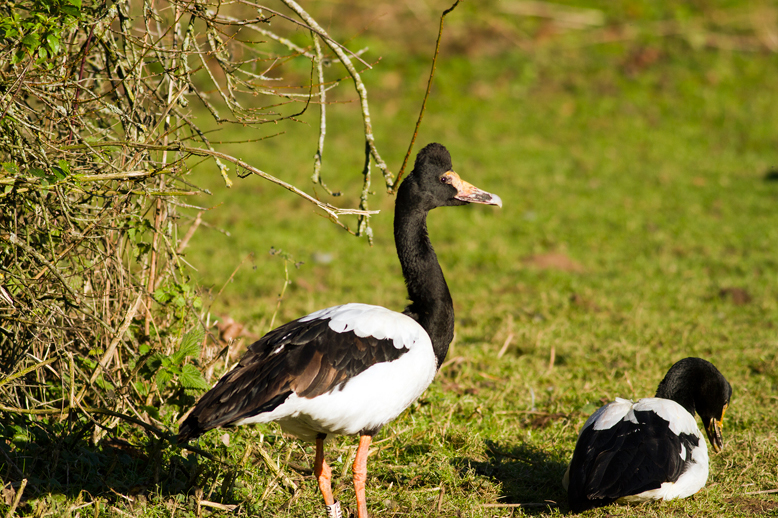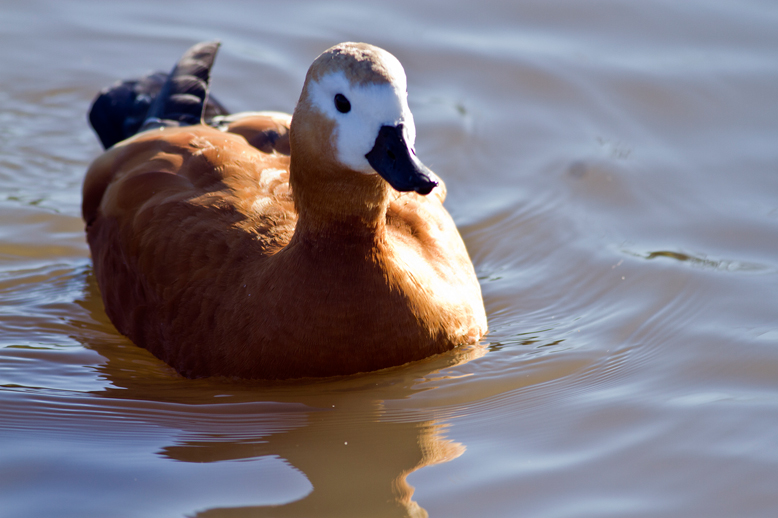Last Sunday, 18 January 2015, I visited Slimbridge. In fact, I did very little bird watching in the sense of observing wild birds. It was my first visit to Slimbridge and I mainly enjoyed myself plodding around the ponds where the collections are and seeing some very colourful ducks, swans and geese from all parts of the world.
I’m appending below some new species – new for me, that is. These don’t really belong in my birding collection but they are all God’s creatures, as it were, and I see no harm in displaying them here. However, it should be said that little skill was required in finding or photographing these birds – the only real problem I had was getting far enough away from them to use a 400mm lens, a real problem with some ducks that rush up to you expecting a handful of grain!
As usual, all the photos were taken by me, and on the day; all with my Canon 7D and 400mm lens, without flash. Click on any image for slide show only, or scroll down for commented version. Comments on distribution have been adapted from English or Spanish language Wikipedia entries. Photos appear BELOW name and distribution details.
American Flamingo – Phoenicopterus ruber
Also known as the Caribbean flamingo, but not the best name as it also appears in the Galápagos. The only flamingo which naturally inhabits North America.
Andean Flamingo – Phoenicoparrus andinus
Found in Andean wetlands from southern Perú to northwestern Argentina and northern Chile.
Andean Goose – Chloephaga melanoptera
Lives in lakes and marshes high up in the Andes, usually well above 3000 metres.
Australian Shoveler – Anas rhynchotis
Found in southwestern and southeastern Australia, Tasmania, and New Zealand.
Bar-headed Goose – Anser indicus
Breeds in Central Asia and winters in South Asia, as far south as peninsular India.
Black-bellied Whistling-Duck – Dendrocygna autumnalis
Breeds from the southernmost United States and tropical Central to south-central South America.
Canvasback – Aythya valisineria
Breeds in North America prairie potholes. Important breeding areas are the subarctic river deltas in Saskatchewan and the interior of Alaska.
Cape Barren Goose – Cereopsis novaehollandiae
A large goose that lives in southern Australia.
Comb Duck – Sarkidiornis melanotos
Found in tropical wetlands in sub-Saharan Africa, Madagascar and south Asia from Pakistan to Laos and extreme southern China. It also occurs in continental South America south to the Paraguay River region in eastern Paraguay, southeastern Brazil and the extreme northeast of Argentina, and as a vagrant in Trinidad.
Common Crane – Grus grus
Found in the northern parts of Europe and Asia.
Common Redshank – Tringa totanus
A widespread breeding bird across temperate Eurasia. A migratory species, wintering on coasts around the Mediterranean, on the Atlantic coast of Europe from Great Britain southwards, and in South Asia.
Emperor Goose – Chen canagica
Breeds around the Bering Sea, mostly in Alaska, USA, but also in Kamchatka, Russia. It is migratory, wintering mainly in the Aleutian Islands.
Eurasian wigeon – Anas penelope
Breeds in the northernmost areas of Europe and Asia. It is strongly migratory and winters further south than its breeding range. It migrates to southern Asia and Africa.
Falcated Duck – Anas falcata
Breeds in eastern Asia. It nests in eastern Russia, in Khabarovsk, Primorskiy, Amur, Chita, Buryatia, Irkutsk, Tuva, eastern Krasnoyarsk, south central Sakha Sakhalin, extreme northeastern North Korea and northern China, in northeastern Inner Mongolia, and northern Heilongjiang, and in northern Japan, Hokkaidō, Aomori, and the Kuril Islands.
Gray Crowned-Crane – Balearica regulorum
Found in dry savannah in Africa south of the Sahara, although it nests in somewhat wetter habitats. They can also be found in marshes, cultivated lands and grassy flatlands near rivers and lakes in Uganda and Kenya, and south to South Africa.
Greater Flamingo – Phoenicopterus roseus
Found in parts of Africa, southern Asia (coastal regions of Pakistan and India), and southern Europe (including Spain, Albania, Turkey, Greece, Cyprus, Portugal, Italy and the Camargue region of France).
Greater White-fronted Goose – Anser albifrons
Subspecies A. a. albifrons breeds in the far north of Europe and Asia, and winters further south and west in Europe. The very distinct Greenland white-fronted goose, A. a. flavirostris, breeds in western Greenland, and winters in Ireland and western Scotland.
Lesser Flamingo – Phoenicopterus minor
A species of flamingo occurring in sub-Saharan Africa with another population in India.
Magpie Goose – Anseranas semipalmata
Found in coastal northern Australia and savannah in southern New Guinea, where it also breeds.
Maned Duck – Chenonetta jubata
Widespread in Australia, including Tasmania.
Plumed Whistling-Duck – Dendrocygna eytoni
Breeds in New Guinea and Australia.
Puna Teal – Anas puna
Resident in the Andes of Peru, western Bolivia, northern Chile, and extreme northwestern Argentina. Found on the larger lakes and pools in the altiplano.
Red Shoveler – Anas platalea
Found in southern South America, in Argentina, southern Peru, southern Bolivia, Uruguay, Paraguay, the Falkland Islands, South Georgia and South Sandwich Islands, southern Brazil, and Chile. In winter the southernmost birds migrate north to Brazil and Peru.
Red-breasted Goose – Branta ruficollis
Breeds in Arctic Siberia, mainly on the Taymyr Peninsula, with smaller populations in the Gydan and Yamal peninsulas. Most winter along the northwestern shores of the Black Sea in Bulgaria, Romania and Ukraine (occasionally moving further southwest to Greece), but some winter in Azerbaijan.
Red-crested Pochard – Netta rufina
Its breeding habitat is lowland marshes and lakes in southern Europe and Central Asia, wintering in the Indian Subcontinent and Africa.
Ruddy Shelduck – Tadorna ferruginea
Very small resident populations in north west Africa and Ethiopia, but the main breeding area of this species is from southeast Europe across central Asia to Southeast Asia.
Tundra Swan – Cygnus columbianus
Also known as Bewick’s swan. Breeds in the Arctic and subarctic tundra, moving south in winter.
West Indian Whistling-Duck – Dendrocygna arborea
A whistling duck that breeds in the Caribbean, also known as black-billed whistling duck and Cuban whistling duck.
White-cheeked Pintail – Anas bahamensis
Found in the Caribbean, South America, and the Galápagos Islands.
White-headed Duck – Oxyura leucocephala
Breeds in Spain and North Africa, with a larger population in western and central Asia.
Wood Duck – Aix sponsa
A species of perching duck found in North America.
































You have wrongly named a bird as Greater Scaup. I’m not sure what the bird in the photo is but I know it’s not a Scaup. I hope you don’t mind me pointing this out. You have a nice set of photos in particular I like the Redshank shot
Keith
Hi I have just done a search and I think the bird seems to be Falcated Teal
Thanks, Keith – not sure what happened here but you are absolutely right. I’ll correct the text. Thanks for your kind comments.